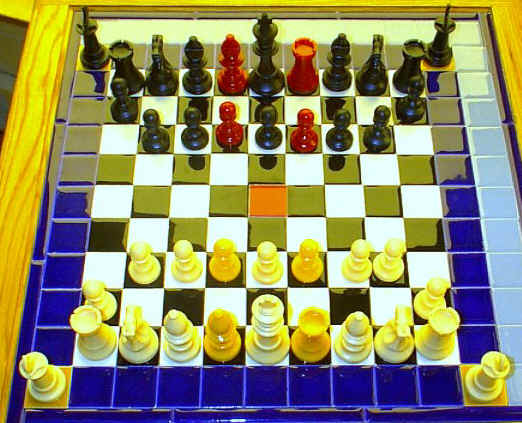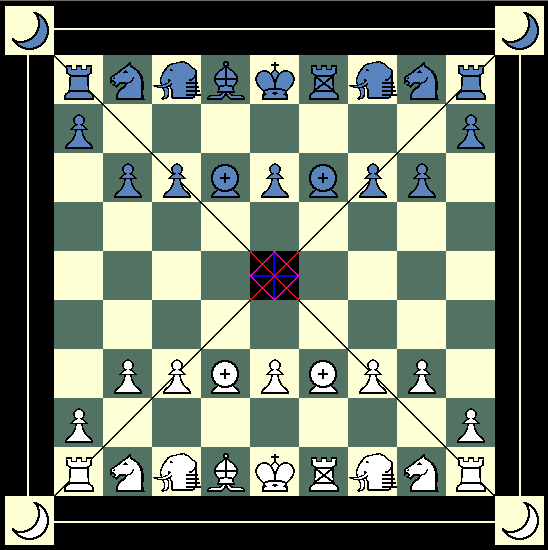The board, including the four citadels and subtracting the
central non-square, here called the Star Pool, contains
84 squares to comply with the contest
rules!
 King King
| King:
A King can move or capture to any adjacent square, but never to a square
where it can be captured.
When making its first move and not in check, the
King may leap like a Knight. This move can capture.
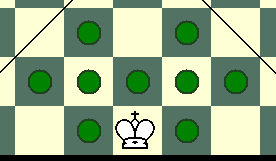
The King may also move or capture orthogonally across the Star Pool as if it were not
there.

Or, the King may move or capture diagonally across the Star Pool as if it were not
there, or to the corresponding citadel.

The King may also move or capture orthogonally from citadel to citadel or
one square diagonally out of a citadel.
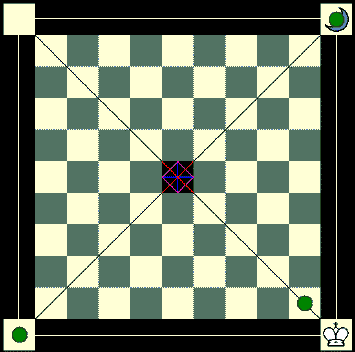
The player that checkmates the opponent's King wins the
game.
|
|
General
| General:
A General moves or captures any number of squares orthogonally on a
rank or a file, or takes a single diagonal step. It may not leap over other
pieces.
This piece originates in Shogi, where it is known as a or Ryu-O, and
is the promoted form of a Rook. In Star Pool Chess, the Lieutenant
promotes to a
General if it reaches the opposing side's back rank or citadels.
The General may also move or capture orthogonally across the Star Pool as if it were not
there.
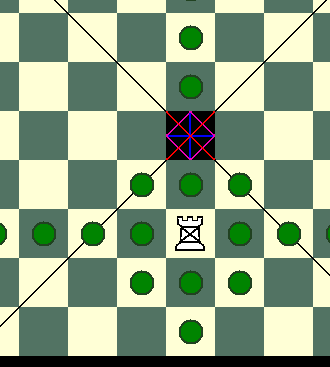
Or, the General may move or capture diagonally one square across the Star Pool
as if it were not
there, or to the corresponding citadel.

The General may also move or capture orthogonally from citadel to citadel
or one square diagonally out of a citadel.
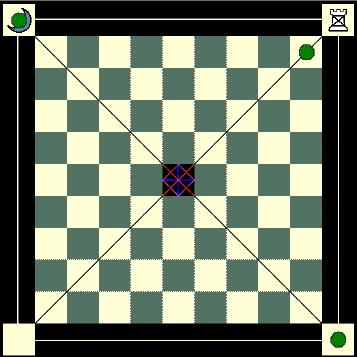
|
 Captain Captain
| Captain:
The Captain moves any number of squares on a diagonal, or may step one space
orthogonally. It may not leap over other pieces.
This piece originates in Shogi, where it is known as a Ryuha, and is the promoted form of a Bishop.
In Star Pool Chess, the Sergeant promotes to a Captain if it reaches the opposing side's back rank or
citadels. A Pawn also promotes to a Captain upon reaching
the opposing sides citadels by jumping across the Star
Pool.
The
Captain may also move orthogonally
one square across the Star Pool as if it were not
there.
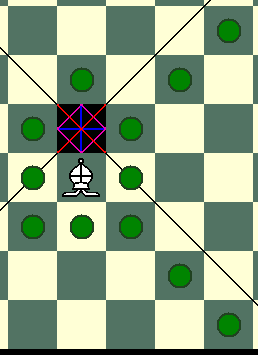
Or, the Captain may move or capture diagonally any number of squares across the
Star Pool as if it were not
there, or to the corresponding citadel.
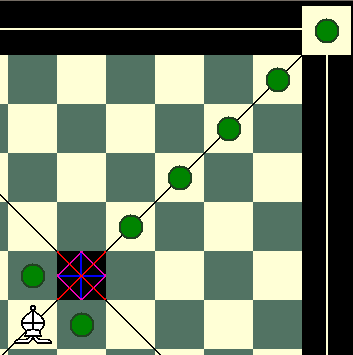
The Captain may also move or capture orthogonally from citadel to citadel
or any number of squares square diagonally out of a citadel or to the citadel
diagonally across.
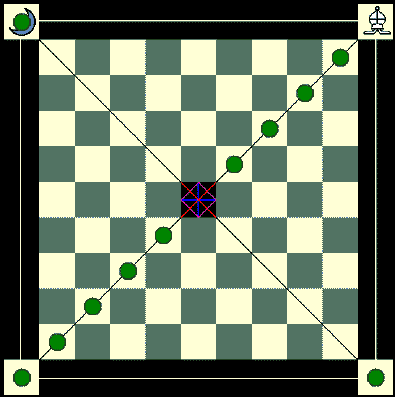
|
 Great
Elephant Great
Elephant
| Great Elephant:
The Great-Elephant steps one square diagonally or forward or jumps two
squares diagonally or forward.
The Great-Elephant may also move or capture orthogonally across the Star Pool
as if it were not
there.
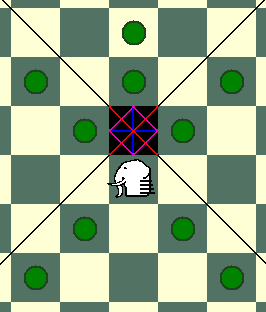
Or, the Great-Elephant may move or capture diagonally across the Star Pool
as if it were not
there, or to the corresponding citadel.
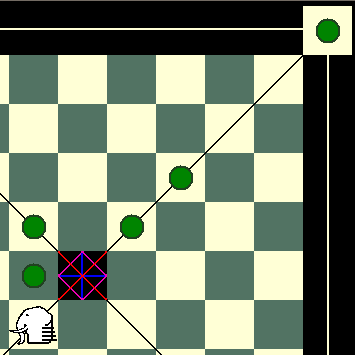
The Great-Elephant may also move or capture orthogonally from citadel to
citadel, but only in the forward direction, or diagonally out of a citadel.

|
|
Knight
| Knight:
A Knight moves first one square orthogonally then one square diagonally
outward. Unlike in orthodox Chess, the order is important because it affects
the influence of the Star Pool. The Knight hops over any pieces on the
way.
If crossing the Star Pool when making the diagonal part of its move, the
Knight may move or capture diagonally across the Star Pool
as if it were not
there, or to the corresponding citadel.
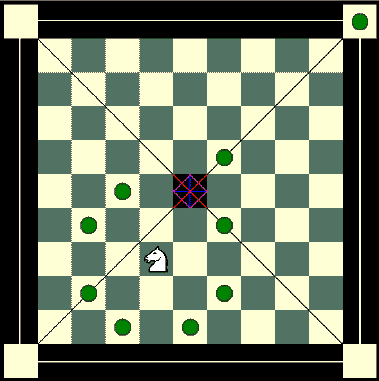
If crossing the Star Pool when making the orthogonal part of its move, The
Knight may also move orthogonally across the Star Pool
as if it were not
there.
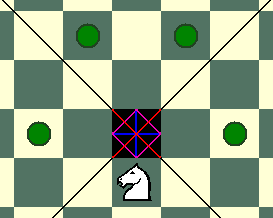
Note that if the Knight is in a citadel, it jumps over the non-board to
reach the board. The Knight may not move from citadel to citadel.

|
 Rook Rook
| Rook:
A Rook moves any number of squares orthogonally on a rank or a file. It may
not leap over other pieces.
The Rook may also move or capture orthogonally across the Star Pool
as if it were not
there.

The Rook has no way to reach the citadels by its own movement. However, if
the Wizard swaps its place with the Rook, the Rook is placed in a citadel.
Once in a citadel, the Rook may move and capture orthogonally from citadel to
citadel. But, it cannot leave the citadels until swapped again by a Wizard!
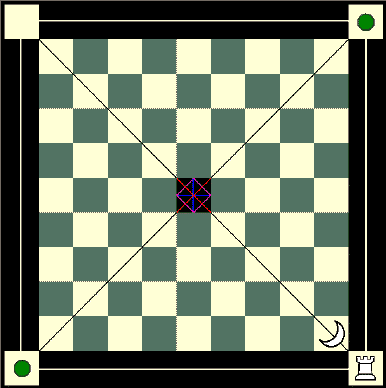
|
 Wizard Wizard
| Wizard:
The Wizard is classified as a leaper. It can move one square diagonally in
all four directions. Or, like an exaggerated Knight move, the Wizard can jump
two squares horizontally or vertically and then one square diagonally outward.
The Wizard has a special power to swap positions with any adjacent friendly
piece.
The Wizard, except for its special swap move, is a piece borrowed from Omega
Chess.
Note that if the Wizard is in a citadel, it jumps over the non-board to
reach the board. The Wizard cannot move from citadel to citadel.
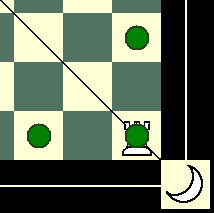
If crossing the Star Pool when making the orthogonal part of its leap move, The
Wizard may also move orthogonally across the Star Pool
as if it were not
there.

If crossing the Star Pool when making the diagonal part of its leap move,
the Wizard may move or capture diagonally across the Star Pool
as if it were not
there, or to the corresponding citadel.

When making its one square diagonal move, the Wizard may also move or capture diagonally across the
Star Pool as if it were not
there, or to the corresponding citadel.
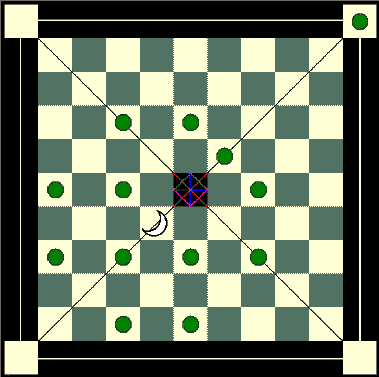
|
|
Pawn
| Pawn:
A Pawn can move straight ahead one square. A Pawn captures by moving one
square ahead and diagonally.
If a Pawn reaches the rank on which the opposing
Pawns started (the 6th for white, the 3rd for black) it promotes to a Sergeant. Note that
Sergeants are not included in the initial board setup.
They only come into play through Pawn promotion. If a Pawn reaches an opposing
citadel by jumping across the Star Pool, it promotes to a Captain.
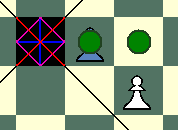
The end pawns may move two squares forward on their first move.
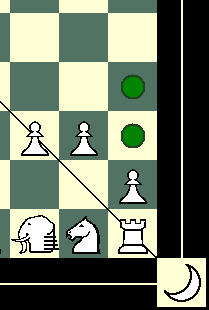
The Pawn may also move orthogonally across the Star Pool
as if it were not
there.

Or, the Pawn may capture diagonally one square across the Star Pool
as if it were not
there, or to the corresponding citadel.

|
 Sergeant Sergeant
| Sergeant:
A Sergeant moves one square diagonally. The Sergeant has the
capabilities of the ancient Ferz.
The Sergeant may move and capture across the Star Pool
as if it were not
there, or to the corresponding citadel.
If it reaches the opposing side's
back rank or citadels, it promotes into a Captain.
If a Pawn reaches the rank on which the opposing
Pawns started (the 6th for white, the 3rd for black), or if it reaches a
citadel, it promotes to a Sergeant. Note that
Sergeants are not included in the initial board setup.
They only come into play through Pawn promotion.

|
 Lieutenant Lieutenant
| Lieutenant:
A Lieutenant moves one square left, right up or down. It may not leap over
other pieces. The Lieutenant has the same movement as the ancient
Wazir.
If it reaches the opposing side's back rank or citadels, it
promotes into a General.
The Lieutenant may also move or capture orthogonally across the Star Pool
as if it were not
there.

Like the Rook, the Lieutenant has no way to reach the citadels by its own
movement. However, if the Wizard swaps its place with a Lieutenant, the
Lieutenant is placed in a citadel. If this is the case, the Lieutenant may
move and capture orthogonally from citadel to citadel. But, it cannot leave
the citadels until swapped again by a Wizard!
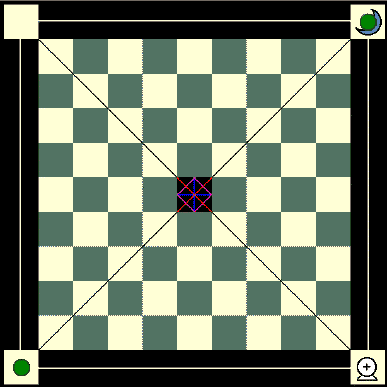
|
A paper set can be made by printing and cutting out the below board and
pieces.
